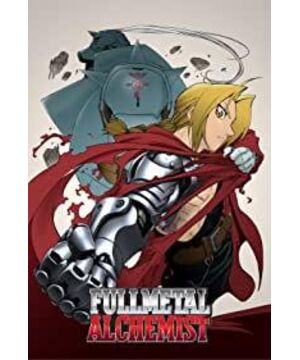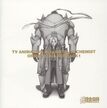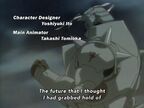The producer SQUARE ENIX defines Gang Lian as a juvenile animation, but the post-modernism that it reveals makes this "juvenile" animation smear a heavy realistic and cruel color. From the cartoon, we can clearly receive a message: Alchemy can refer to the advanced technological civilization of mankind, and from "science does not originate from our virtues, but from our evil. Astronomy was born from superstition, geometry From the phrase "born from greed, physics from vanity curiosity", it can be seen that the author is skeptical about alchemy, that is, whether advanced human science and technology can benefit people. From Chapter 7, the alchemist Taka began to refine his little girl and the dog, and the producer began to continuously doubt and criticize the technological civilization wandering at the crossroads. And most of the alchemy technology in the animation is owned by the military. The use of scientific and technological civilization for war and suppression of the people is not a rhetorical question about the use of technology? The questioning of technology reveals the strong postmodernist worldview in animation. But in the animation, we observe carefully, which also gleams with the brilliance of the humanistic spirit.
So why is the modern-themed animation so popular in the future? Why can the gloomy worldview and the cruel reality of the plot attract people's attention? Apart from the company's hype, another very important reason is the prevalence of Japan's ACG postmodernism. Speaking of this trend, we should start with the origin of postmodernism in the Japanese ACG. Japan’s ACG postmodernism trend was driven by the animation industry, which dates back to the late 1980s and early 1990s. In the 20 years before that, due to the rapid economic recovery in Japan after the war, people worked hard every day for a better life. , The younger generation has a clear goal, so the animation in the 1970s is dominated by strong humanistic works that emphasize inspiration and friendship. However, with the development of Japanese industry and the rapid economic growth, the new generation of young people in Japan lost their goals due to their superior life, and became a confused generation. During this period, the suicide rate and crime rate in Japanese society increased significantly. And animation that emphasizes the humanistic spirit is no longer popular. But it was the Miyazaki incident in 1989 that really defeated this type of animation. After that, the government and the media questioned the value of ACG's works, so they began to vigorously crack down on the animation market, and the Japanese animation market began to fail. Until the end of the 1990s, an esoteric, obscure, and decadent animation turned out to be in line with the world values of the new generation of Japanese youth. Moreover, the animation's narrative method based on the growth of the protagonist is very similar to the protagonist’s personality. Part of the new generation of youth is fascinated, and its rise has saved the Japanese animation market that has been paralyzed for 10 years. This work is the famous EVA.
The birth of EVA is popular because the new generation of Japan is tired of the preaching of hot-blooded animation and blindly believes that life is aimless. So EVA, which subverts all traditions, has become the object of their pursuit. Many successful post-modern elements in EVA are also borrowed from subsequent animations and even games: from the fearless personality of the protagonist in the past to the obvious personality defect of Shinji Ikura (which is very closely related to the family education of the Japanese society at that time), by the heroine The innocent and lively girl of Ling Boli (the most obvious role to learn from later is Ruri Hoshino in the mobile battleship), not to mention the use of religiousism, blood, and obscene scenes in the animation, all of which indicate With the advent of ACG postmodernism. Since then, the late-night animation files of Nippon TV have become the target of young people's pursuit. It is undeniable that the birth of EVA has also driven the recovery of the Japanese orthodox animation industry. A batch of excellent traditional animations that emphasize the humanistic spirit, such as ONE PIECE, NARUTO, have also begun to be popular in Japan. The post-modern elements of ACG have also become popular since EVA. Therefore, the success of Fullmetal Alchemist is inseparable from the prevalence of postmodernism. It can also be said that the current Japanese market demand has created the dark worldview of Fullmetal Alchemist.
In my opinion, the postmodern world outlook in ACG in Japan today can be divided into two main categories: one is postmodernism in the scientific outlook, and the other is postmodernism in society. The postmodernism of the scientific outlook, as the name suggests, is a questioning and critical attitude towards science and technology or high technology used by human beings now or in the future, which reflects the two positions of Japanese society on science and technology. One has a strong sense of conquering science and technology, while the postmodernism of scientific view is a concern about the development of science, which is also a theme that will be mentioned in many hard science fiction ACG works in Japan. For example: Japan's 2002 Nebula Awards animation PLANET-ES is an animation that uses a small space junk as a starting point to explore the serious and realistic topics of human exploration of the universe and the environment of the universe. The animations of the recent Nebula Awards are almost all set in the context of the post-modernist world outlook. Of course, there are also such expressions in mainstream animations such as Gundam. Another category is postmodernism in society. What I want to express is that this type of work is to illustrate the cruel reality of society and the dark side of human nature. This type of work is also very popular in Japan today, and it will also be mentioned and described in mainstream ACG works. For example, GONZO produced GANTS, this manga is still being serialized, and this work is about the lives of the bottom people in Japan. , And their growth process, many of the shots are intriguing, reflecting social problems such as the openness of Japanese youth's sexuality and the indifference among social people. The character of the protagonist Genno Kee also belongs to the incomplete personality. Of course, these two kinds of postmodernism are not opposites, so in many works we see that the two often coexist at the same time.
The following will make a brief analysis of several typical ACGs to take a look at the postmodern elements and the humanistic spirit in them, as well as the author's ideas. The first is the aforementioned Fullmetal Alchemist. The "equivalent exchange" concept that has been instilled in the animation can be said to be a miniature embodiment of the universal values of modern society. And another key point in the entire animation-----the stone of the sage, the method of making the lives of countless people, and the stone of the sage is a treasure that can be made into everything, we can regard it as a cutting-edge science Technology, as revealed in the animation: top-notch scientific and technological research is based on the concept of many sacrifices. These two points are both a question of society and concerns about the future development of human science and technology. Moreover, the artificial humans who appear as the evil side are also a cruel existence. Because they are all produced by alchemists when they try scientific taboos, the animation uses their own tragedies to illustrate the powerlessness of human control over science and technology. And selfish desires. After that, the president, as an artificial human, manipulated human society to trample on human civilization, which is even more a critique of the scientific civilization that has gone astray. But under such a heavy theme, we can still see the brilliance of human nature. The plot of steel can be divided into two categories. The most important category is the evil of alchemy and the questioning of science and technology. The auxiliary category is Goodness against it. In the 25 words, the death of Lieutenant Hughes gave us a message. As a soldier who knows no alchemy at all, he showed us his noble sentiment as a person, and he brought out a great idea: What people perfect is not science and technology, but noble morals. And it is these realistic post-modern elements and proper humanistic spirit that have contributed to the great success of steelmaking.
Unlike the Fullmetal Alchemist, the world set in the future EVA reflects the most ugly human nature. It is an animation mainly based on social postmodernism. In the animation, SEELE and NERV had differences in their understanding of the human completion plan, and SEELE began to eradicate NERV after the last apostle was eliminated. This led to the scene of destruction in the theatrical version. It is not the enemy and apostle who destroys human beings, but humans themselves. In the animation, we can see many fragments that reflect the reality of Japanese society: the feelings between the protagonist Shinji Ikura and his father Alienation generally reflects the relationship between father and son in real Japanese society. Fathers neglect to communicate with their sons due to work, and sons have incomplete personalities due to traditional Japanese education. This is a problem in Japanese society. The author made a complete disclosure in the form of animation. And in the final great destruction, is the demise of mankind the final evolution of sinful, greedy selfishness? Maybe we can guess some clues from the name "Human Completion Project". In the process of human completion, due to Asuka's optimistic personality, she was eventually retained as Eve, which once again proved the concept of noble personality perfecting people, revealing a trace of humanistic spirit in despair.
Except for these in the game field There are also many works with strong postmodernism, such as Killer 7, Resident Evil, etc. In ACG’s numerous postmodernist works, we can more or less find the emergence of humanistic spirit at the end or in the process. From this phenomenon, we can know that the author’s understanding of the current situation of Japanese society or the rapid development of human science and technology Worried, but while worrying, the author still believes in the role of human noble character. From the analysis of the above works, we can find that in Japan's postmodern ACG, the widespread publicity of noble personality can change the world's point of view, which is also related to the status quo of young people in Japanese society. The producer wanted to use popular post-modernist animation to change the indifferent and realistic values of the Japanese people in order to achieve the goal of beautifying Japanese society. So that people can think more while being shocked, and believe that they can change society with their own actions. The complementarity of postmodernism and humanistic spirit is the unique feature of ACG in Japan.
In addition to so many gray plots, in fact, the producers of ACG still fully considered the glorious side of human nature. Even in the post-modernist works, hope and despair often coexist at the end, and the steel is confident. The promise to the brother in another world, the remaining Adam and Eve (Shinji and Asuka) in the EVA, and the light caught by Genno Kei in GANTS when he was chased by the subway. These all reveal a faint hope for tomorrow's thoughts. . At the same time, the producer's vision for the future after all kinds of doubts about the real world and science and technology. These are the manifestations of the humanistic spirit in postmodern works. Looking at the humanistic spiritual world view independently, he is also divided into the humanistic spirit in the scientific view and the humanistic spirit in the social view. The humanistic spirit in science is reflected in the human control of science. Contrary to the postmodern world view, the humanistic spirit believes Science and technology can be mastered and benefit mankind. The humanistic spirit in the social outlook is reflected in the friendship and hope among people. This is also the genre adopted by many mainstream ACGs.
View more about Fullmetal Alchemist reviews











